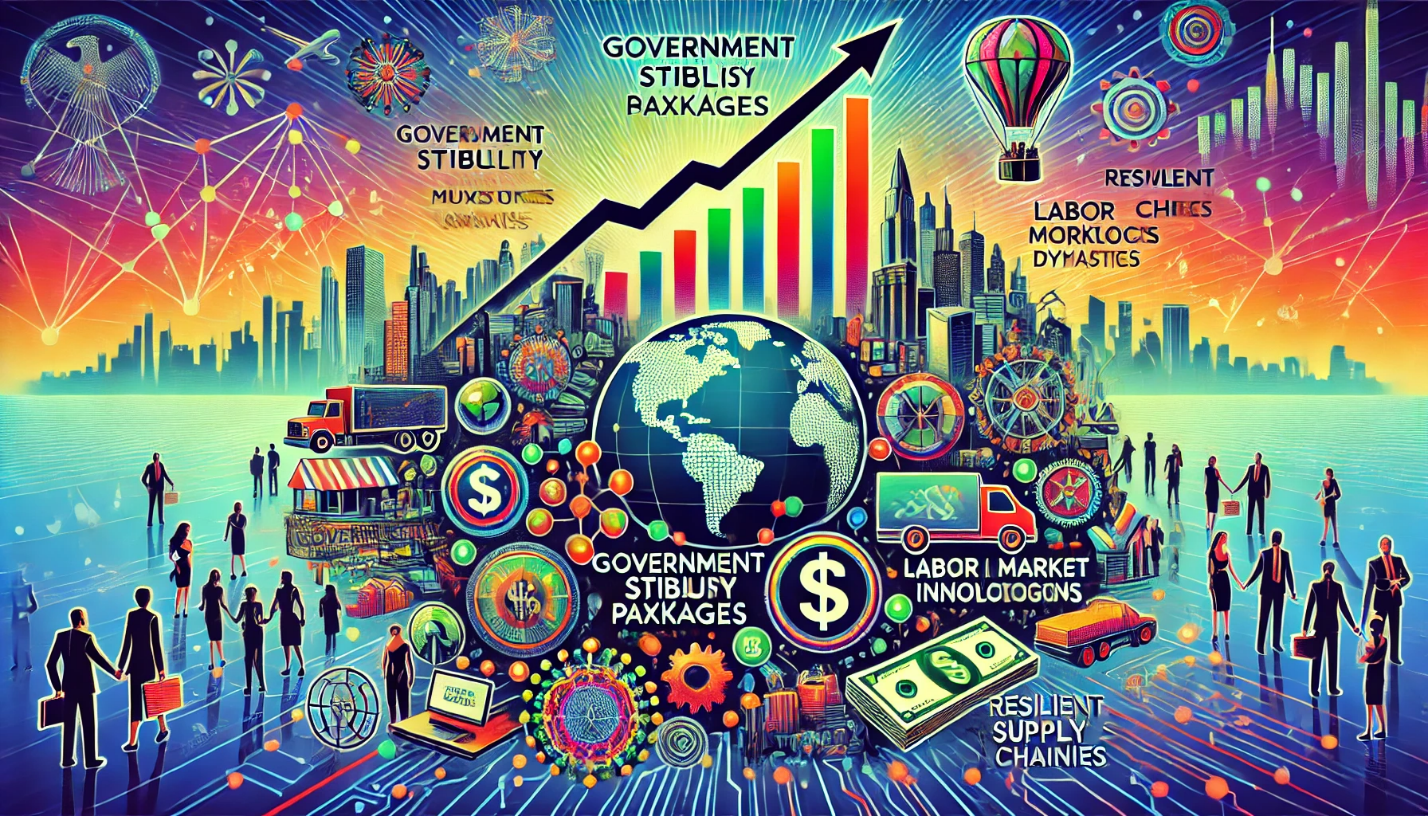- All Plans
- Yahoo Press Release
- Bloomberg Press Release + Yahoo Finance
- Business Insider Press Release
- Benzinga Press Release
- Digital Journal Press Release
- US Times Now Press Release
- AP News Press Release
- Yahoo Finance Press Release
- Street Insider Press Release
- MSN News Press Release
- USA Today Press Release
Economic Recovery Trends: What’s Driving Market Growth in the U.S

Explore the new trends in economic recovery across the U.S. Learn the drivers of market growth and how economic trends are shaping the future.
The economic landscape has been a matter of discussion and much analysis by virtue of recent global events. As with so many other unprecedented matters in this world, understanding the trends in recovery becomes more relevant. This article discusses what underpins the U.S. markets in terms of growth, based on a look at some of the key factors and arising trends in the present economic scenario.

Economic Recovery Trends: What’s Driving Market Growth in the U.S
Understanding Economic Recovery
Economic recovery is the period in a business cycle that comes after a recession, in which the economy resumes growth and moves towards full employment. It is essentially a period of rising production accompanied by an increase in incomes and confident consumption. The U.S. has witnessed various recovery phases, and each of them has been fueled by different factors, such as technological, policy, and changes in the global economy.
Key Drivers of Economic Growth
- Government Stimulus Packages
Key among the big pushes that have seen a recovery in the U.S. economy of late is the plethora of government stimulus packages. Direct injections of monetary support to the general population, accompanied by unemployment benefits and small-business aid packages, have supplied huge liquidity in the economy, which has helped support consumer spending and simultaneously kept businesses afloat through tough times.
- Technological Innovation
Technology has been a core driver of market trends. Rapid digital technology adoption, the pandemic notwithstanding, is changing industries, raising productivities, and opening up more ways for growth. From e-commerce to remote work solutions, technology is reshaping the economic landscape and encouraging innovation.
- Consumer Confidence and Spending
Consumer confidence is a key indicator for an economy’s health. As vaccination increases and constraints relax, consumer confidence bounces back. Consumer spending increased a lot. Continuously expanding consumption is a driving force, encouraging businesses to expand and therefore continuously creating job opportunities, which will foster expanding and sustained economic growth.
- Labor Market Dynamics
The labor market is another area where the economic recovery is important. The country has seen a steady drop in the rate of unemployment, albeit with some areas facing issues with the non-availability of workers. Skill development and competence, generated out of dynamic needs of the job market, will have to be reformed to place the economy on healthy and inclusive growth.
- Supply Chain Resilience
Supply chains were shattered globally, and shortages and delays became prevalent. Companies have, however, been recasting by diversifying their suppliers and investing in more resilient supply chain strategies through local productions. These moves are very sensitive to the steadiness of the markets and on the course of economic recovery.
You May Also Like:
BlockDAG: A Rising Star in Crypto with $28.3M Presale Amid Bitcoin Cash and Chainlink Market Trends
Market Analysis Reveals Trends in Gold Plating Machine Prices in India
Online Marketing Trends 2023: SyntheticV Reveals Key Insights for Success
Impact of Policy Measures
- Monetary Policy
The monetary policy of the Federal Reserve has really been the means through which economic recovery has been supported. In that respect, low interest rates and quantitative easing measures have made the process of borrowing and investment relatively cheap, and as a result that has stimulated economic activity. Such policies are designed to maintain stability in finance and ensure growth in the long run.
- Fiscal Policy
It has also included fiscal policies, especially tax reforms and public expenditure drives. In fact, investments in infrastructure, education, and healthcare are not just needed for short-term recovery, but would indeed be required to create a base for long-term growth.
Sectoral Analysis
- Real Estate
The real estate market has really bounced back strongly, with a fast-growing demand for housing and commercial properties. Such demand will be sustained by low mortgage rates and quite a number of other changing lifestyle preferences enabled by remote work. However, for balanced growth, challenges such as housing affordability or supply constraints will need to be sorted out.
- Manufacturing
Manufacturing has been one of the strongest pillars of the U.S. economy, so its recovery is very important. Investments are going on in automation and technology in conjunction with workforce training, to drive productivity and competitiveness. Focus on “Made in America” initiatives has also further propelled the rebirth of this sector.
- Retail
The retail sector has changed dramatically, where most of it has shifted to e-commerce. The conventional brick-and-mortar shops have started establishing online presence and are riding the train of digital remedies to revive their businesses. Hybrid is the model going to shape the future for retail.
You May Also Like:
Market Trends and Needs Drive Innovation in PVC Fencing: A Look at TANG
Global Projector Market Records Remarkable Surge: 2023 Status, Needs, & Trends
Outlook
The journey to full economic recovery is, for sure, slow and cannot be defined by a single factor. The U.S economy has shown certain silver linings, but several factors are going to play their respective role in shaping it.
- Global Economic Conditions
How these global economic trends and geopolitical developments have an influence on the U.S. economy
Critical considerations in this context will be trade relationships, international market dynamics, and global health issues.
- Climate Change and Sustainability
Sustainability and climate change are indeed part and parcel of economic policies and business strategy formulations in modern times. Investments in green technologies and sustainable practices are likely to drive future market trends in this direction.
- Technological Disruptions
They won’t cease to present new opportunities and challenges. What is, therefore, critical is to ensure that while innovation is embraced, the issues of cybersecurity and digital inequality are correspondingly addressed.
Conclusion
The United States is on a recovery sail, complex in its being, with so many inputs that will drive market trends and determine a path to economic growth. Government policies, technologies, consumer behavior, and global dynamics all set the trend that will come. From the identification of trends and understanding of change, it shall be possible for businesses and policymakers to steer the economy toward resilience and prosperity in the future.
